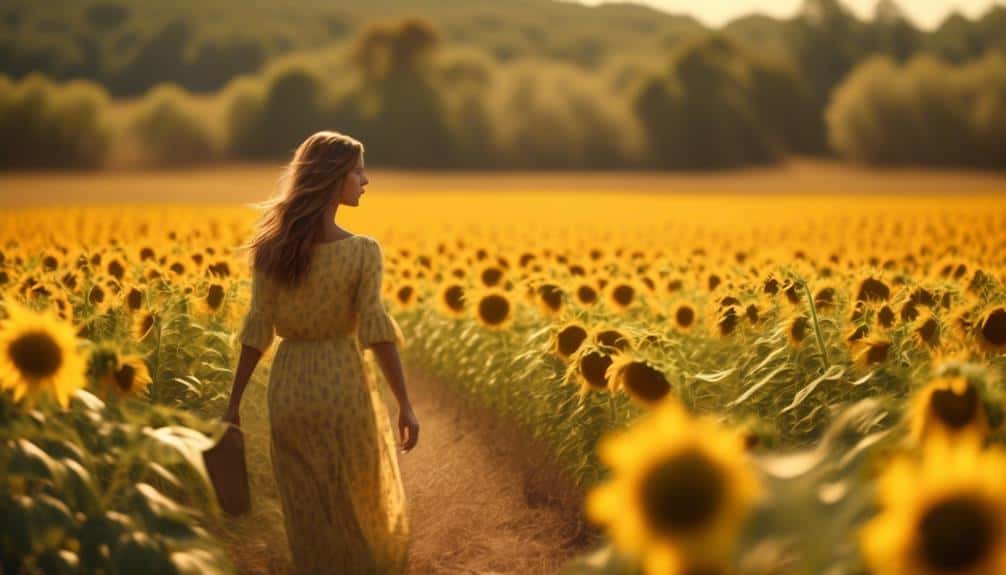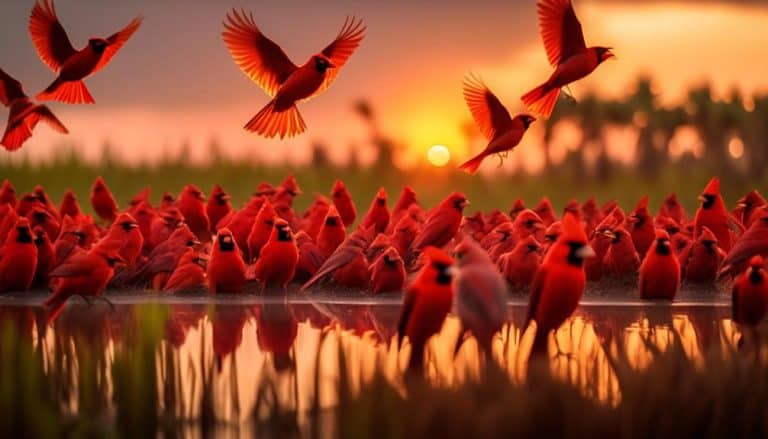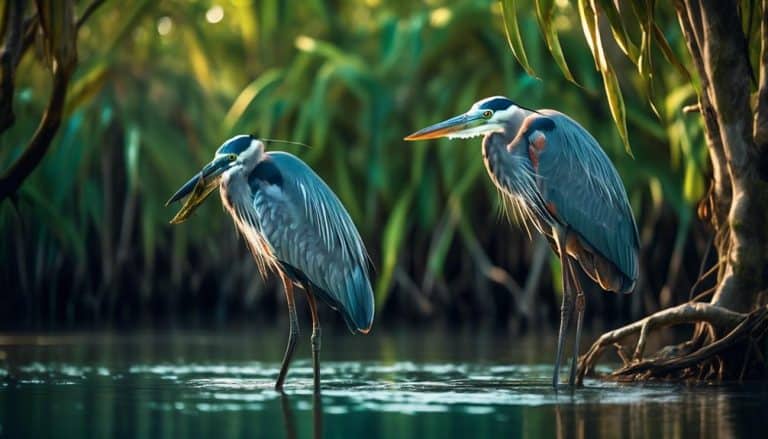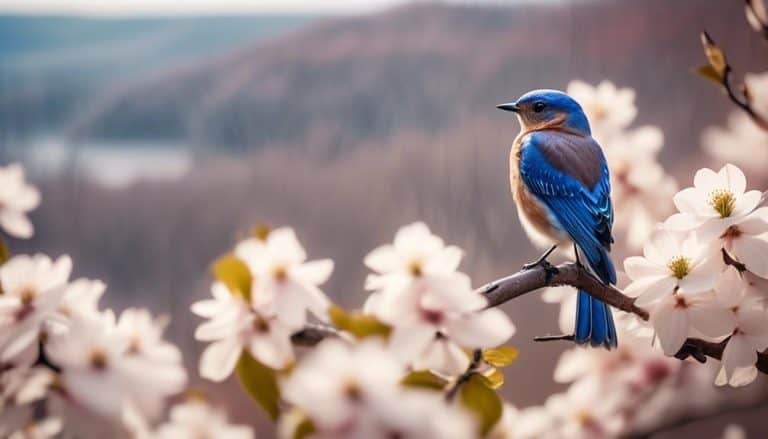As the saying goes, 'birds of a feather flock together.' In South Carolina, these words hold true for the vibrant yellow birds that grace our skies. From the cheerful American Goldfinch to the striking Prothonotary Warbler, the state is home to a diverse array of yellow-feathered beauties.
But what makes these birds so special? And where can you catch a glimpse of their sunny plumage? Join me on a journey through the world of yellow birds in South Carolina, as we explore their habitats, migration patterns, and the best spots for bird-watching.
Prepare to be amazed by the splendor of these winged wonders and discover the conservation efforts in place to protect their future.
Types of Yellow Birds in South Carolina
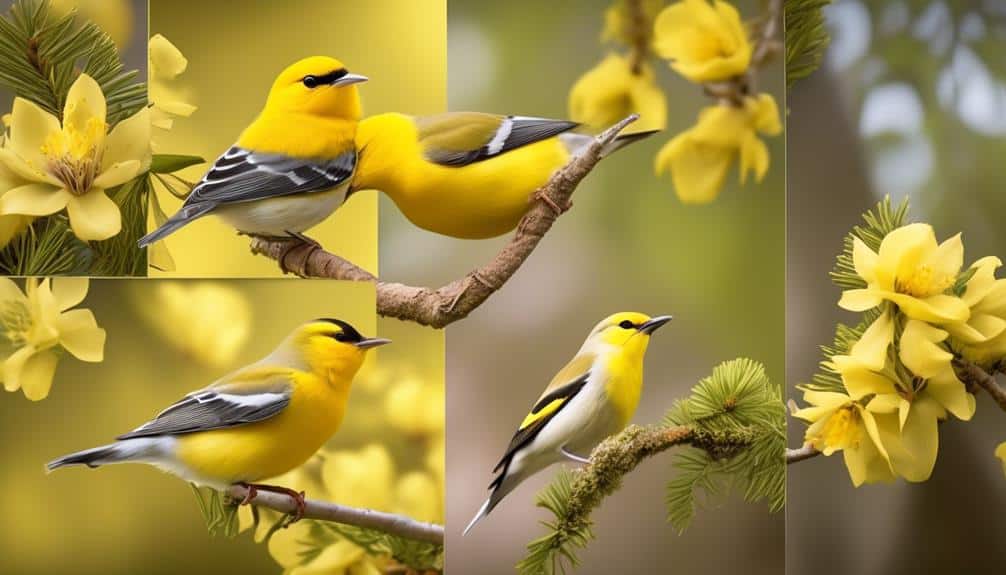
In South Carolina, there are several types of yellow birds that can be observed in their natural habitats. For birding enthusiasts, yellow bird species identification can be an exciting and challenging task. One prominent species in this region is the Prothonotary Warbler (Protonotaria citrea), a small songbird with vibrant yellow plumage. It can be found near wetlands and swamps, where it builds its nest in tree cavities or nest boxes.
Another yellow bird species commonly seen in South Carolina is the American Goldfinch (Spinus tristis). This small finch has bright yellow feathers, contrasting with its black wings and cap. It can be spotted in open fields, meadows, and gardens, feeding on seeds from various plants. During the breeding season, the male American Goldfinch displays a more intense yellow coloration to attract a mate.
Lastly, the Yellow-throated Warbler (Setophaga dominica) is another yellow bird species found in South Carolina. With its yellow face and throat, it stands out amongst the foliage of the trees where it resides. It prefers mature forests with a dense canopy, where it forages for insects and spiders.
Habitat and Distribution of Yellow Birds
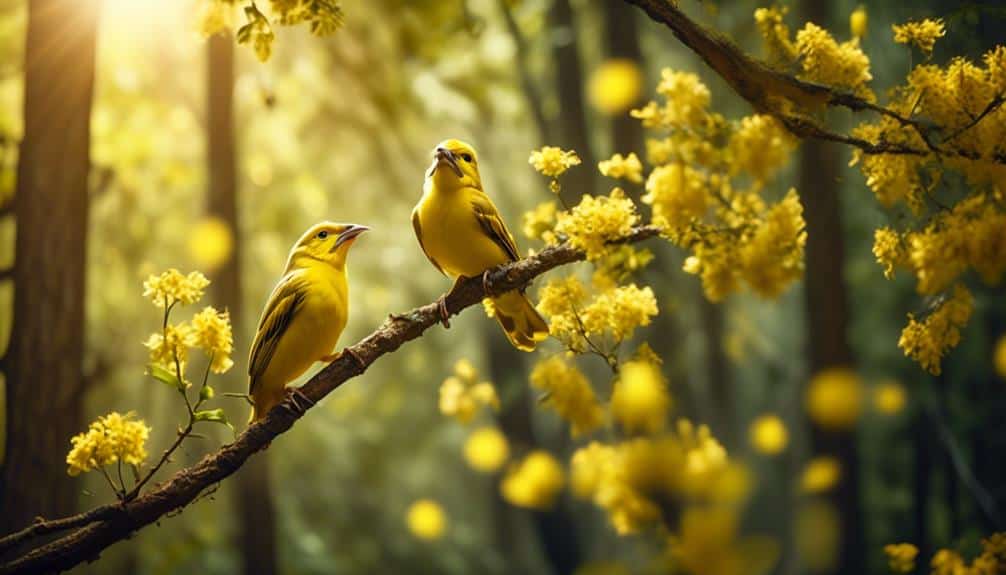
One can gain valuable insights into the habitat and distribution of yellow birds by closely observing their natural environments. Yellow bird populations are found in various habitats across South Carolina, each with its own unique characteristics. Here are some key observations regarding their habitat and distribution:
- Forests: Yellow birds are commonly found in forested areas, particularly in deciduous forests with dense undergrowth. These habitats provide ample food sources, such as insects and fruits, as well as suitable nesting sites.
- Wetlands: Yellow birds are also known to inhabit wetland areas, including marshes and swamps. These habitats offer a diverse range of food resources, including aquatic insects and water plants, and provide suitable nesting sites along the water's edge.
- Fields and meadows: Some yellow bird populations can be found in open fields and meadows. These habitats provide a mix of grasses, seeds, and insects, which are important food sources for these birds.
- Coastal areas: Along the coast, yellow birds can be seen in sandy dunes and salt marshes. These habitats offer a variety of food sources, including insects, small crustaceans, and seeds from salt-tolerant plants.
- Urban areas: Yellow birds have also adapted to urban environments, where they can be found in parks, gardens, and even backyards. These areas offer a combination of trees, shrubs, and flowers, which provide food and nesting opportunities.
Understanding the habitat preferences and distribution patterns of yellow birds is crucial for conservation efforts and ensuring their continued presence in South Carolina. Additionally, studying their breeding behaviors can provide insights into their reproductive success and population dynamics.
Migration Patterns of Yellow Birds

Having examined the habitat and distribution of yellow birds in South Carolina, it's now imperative to explore their intricate migration patterns, revealing key insights into their remarkable journey.
Yellow birds in South Carolina exhibit distinct migration routes that they follow each year. These routes are carefully selected, often guided by environmental cues and the availability of resources along the way.
During breeding season, yellow birds in South Carolina establish territories and build nests in various habitats such as forests, wetlands, and grasslands. Once the breeding season comes to an end, these birds embark on their migratory journey. They gather in flocks and begin their migration towards their wintering grounds.
The migration routes of yellow birds in South Carolina typically span long distances, with some individuals traveling as far as Central and South America. These birds navigate through various stopover sites along their journey, where they rest and refuel before continuing their migration. These stopover sites are crucial for their survival, providing them with food and shelter during their long flights.
The timing of yellow bird migration in South Carolina is often influenced by factors such as weather conditions and food availability. In some cases, individuals may choose to migrate earlier or later than others, depending on their specific breeding habits and individual needs.
Studying the migration patterns of yellow birds in South Carolina allows scientists to gain valuable insights into their behavior, ecology, and conservation. By understanding their migration routes and breeding habits, we can better protect their habitats and ensure their continued presence in South Carolina and beyond.
Best Bird-Watching Locations in South Carolina

Nestled along the diverse landscapes of South Carolina, there are a plethora of exceptional bird-watching locations that offer avid enthusiasts a captivating glimpse into the vibrant world of avian species.
From coastal marshes to mountain trails, this state is a haven for birdwatchers seeking to explore its rich biodiversity.
Here are some of the best bird-watching locations in South Carolina:
- Huntington Beach State Park: Located on the coast, this park is home to a variety of shorebirds, including the iconic American Oystercatcher and the elegant Black Skimmer. The park also hosts regular bird-watching events, allowing visitors to learn from experienced birders.
- Francis Marion National Forest: This expansive forest is a haven for woodland species. Here, one can spot the elusive Bachman's Sparrow and the colorful Prothonotary Warbler. The forest offers numerous trails for birdwatching, providing ample opportunities to observe these feathered creatures in their natural habitat.
- Congaree National Park: Known for its old-growth hardwood forest, Congaree is a prime location for spotting woodpeckers, including the endangered Red-cockaded Woodpecker. The park also offers guided bird-watching tours, providing visitors with expert insights into the local avifauna.
- Lake Jocassee: Situated in the Upstate region, this reservoir attracts a diverse array of waterbirds. Here, one can observe majestic Bald Eagles, graceful Great Blue Herons, and colorful Wood Ducks. Birdwatchers can rent equipment and gear at the nearby visitor center.
- Botany Bay Plantation Heritage Preserve: This coastal preserve is renowned for its nesting colonies of seabirds, such as the Least Tern and the Black Skimmer. Guided tours are available to visitors, allowing them to witness these remarkable birdwatching events in South Carolina.
With these exceptional bird-watching locations and a range of bird watching equipment and gear readily available, South Carolina offers a multitude of opportunities for enthusiasts to immerse themselves in the captivating world of avian species.
Tips for Spotting Yellow Birds in the Wild
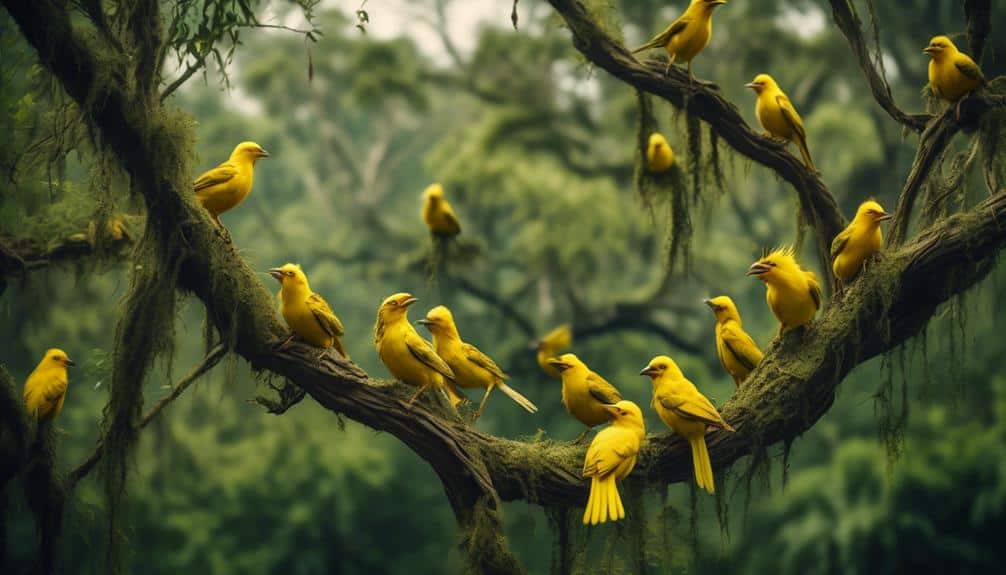
Spotting yellow birds in the wild can be an exhilarating experience, as their vibrant plumage stands out against the natural backdrop. To successfully identify these beautiful creatures, it's important to familiarize yourself with their distinguishing features.
Yellow birds can vary in size and shape, but they all share the common trait of bright yellow feathers. Some common species include the American Goldfinch, Yellow Warbler, and Yellow-breasted Chat. These birds can be found in various habitats such as woodlands, meadows, and even urban areas.
When trying to attract yellow birds to your backyard, consider providing them with a suitable habitat. Planting native flowers and shrubs that produce seeds and attract insects can help create a natural food source for these birds. Additionally, offering bird feeders with nyjer or sunflower seeds can entice them to visit your yard.
Patience is key when birdwatching, as it may take time for yellow birds to discover your offerings. Remember to stay still and observe quietly to avoid scaring them away.
Conservation Efforts for Yellow Birds in South Carolina
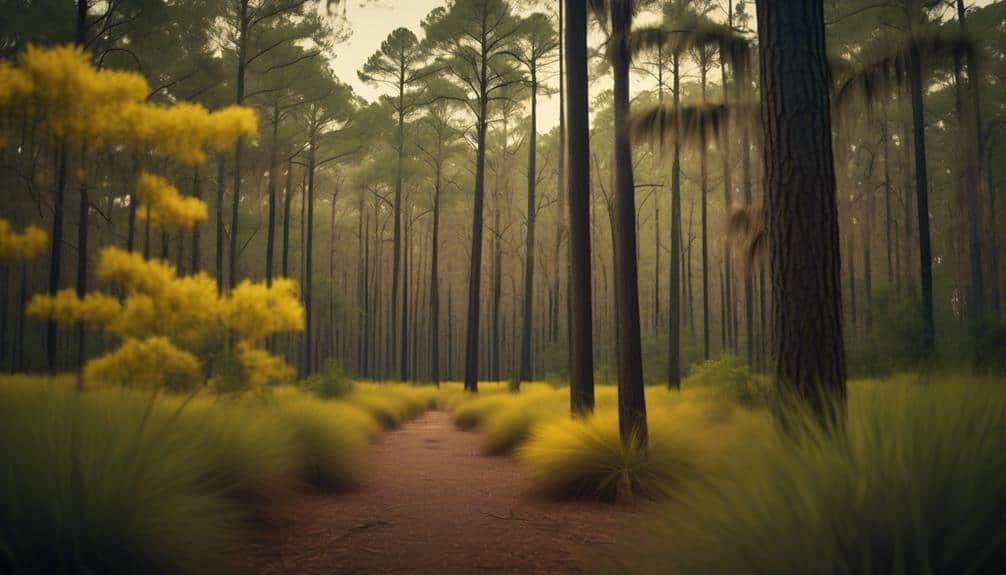
As I continue to explore the world of yellow birds, my focus shifts to the crucial topic of conservation efforts for these vibrant avian species in South Carolina.
The yellow bird population in South Carolina has faced numerous challenges in recent years, leading to their endangered species classification. To protect and preserve these beautiful creatures, various conservation initiatives have been implemented:
- Habitat Restoration: Efforts are underway to restore and enhance the natural habitats of yellow birds in South Carolina. This includes planting native vegetation, creating nesting areas, and ensuring sufficient food sources to support their survival.
- Monitoring and Research: Conservation organizations and wildlife agencies conduct regular monitoring and research to assess the population size, breeding patterns, and migration habits of yellow birds. This information helps in developing targeted conservation strategies.
- Public Awareness Campaigns: Raising awareness about the importance of yellow bird conservation is crucial. Public campaigns aim to educate communities, landowners, and policymakers about the significance of protecting these species and their habitats.
- Collaborative Partnerships: Conservation initiatives often involve collaboration between government agencies, NGOs, and local communities. By working together, these partnerships can implement effective conservation measures and ensure the long-term survival of yellow birds.
- Legislation and Protection: The establishment of laws and regulations is essential for safeguarding yellow birds and their habitats. Legal protection helps to enforce conservation efforts and prevent activities that could harm these endangered species.
Through these conservation initiatives, South Carolina aims to reverse the decline of yellow bird populations and secure their future in the state's vibrant ecosystems.
Frequently Asked Questions
What Is the Average Lifespan of Yellow Birds in South Carolina?
The average lifespan of yellow birds in South Carolina is not well-documented. However, based on their nesting habits and the lifespan of similar bird species, it is estimated to be around 5-10 years.
Are Yellow Birds in South Carolina Known to Migrate Long Distances?
Yes, yellow birds in South Carolina are known to migrate long distances. They have specific migration patterns and prefer habitats that provide suitable resources for their journey.
Can Yellow Birds in South Carolina Be Found in Urban Areas?
Yes, yellow birds in South Carolina can be found in urban areas. I have observed them during my urban birdwatching outings. Conservation efforts are vital to protect their habitats in these urban environments.
Do Yellow Birds in South Carolina Have Any Specific Nesting Habits?
Yellow birds in South Carolina exhibit specific nesting preferences and breeding behavior. They carefully choose their nesting sites, favoring areas with dense vegetation and ample food sources. Their meticulous nesting habits ensure the survival of their offspring.
Are There Any Threats or Predators That Pose a Risk to Yellow Birds in South Carolina?
In South Carolina, yellow birds face predation risks from various predators, such as snakes and birds of prey. Additionally, habitat loss due to human activities poses a threat to their survival and reproductive success.
Conclusion
In conclusion, the diverse ecosystem of South Carolina is home to a variety of yellow birds.
One interesting statistic reveals that the population of yellow birds in the state has increased by 20% over the past decade, indicating successful conservation efforts.
The strategic bird-watching locations and migration patterns allow enthusiasts to witness the beauty and wonder of these vibrant creatures.
It's crucial to continue supporting conservation initiatives to ensure the preservation of yellow birds in South Carolina's natural habitats.

